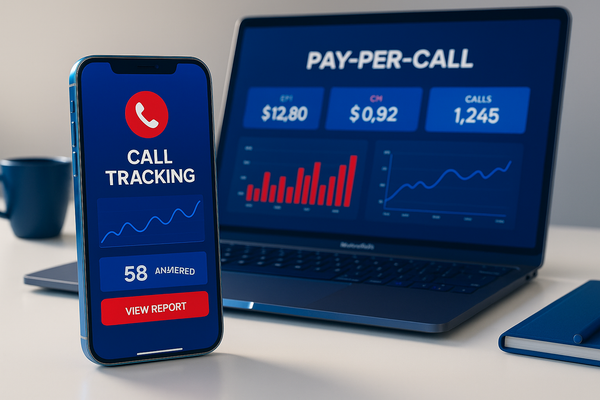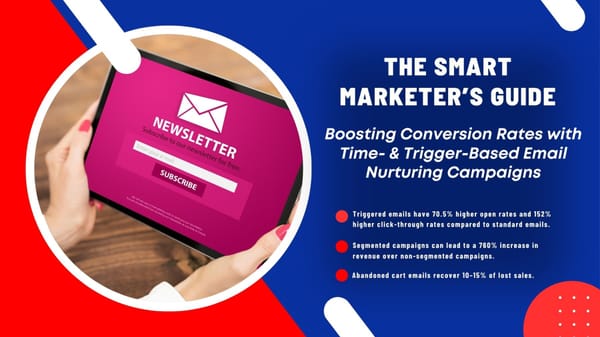From Subscriber to Customer: Nurturing Leads with Effective Email Campaigns

Understanding the Importance of a Quality Email List
The success of your email marketing efforts largely depends on the quality of your email list. A quality email list is composed of engaged subscribers who have willingly opted-in to receive your emails. These are individuals who are interested in your brand, products, or services and are more likely to respond positively to your emails.
For example, a small online clothing store would benefit more from an email list of 1,000 engaged subscribers who regularly open their emails and make purchases, rather than a list of 10,000 subscribers who rarely engage or have little interest in their products.
Strategies for Building an Email List
Building a quality email list requires time and effort, but there are several effective strategies you can use:
1. Website Sign-Up Forms: Place a sign-up form on your website where visitors can easily see it. This could be in the header, footer, or as a pop-up. For instance, a blog about healthy eating could have a sign-up form offering a free weekly recipe to subscribers.
2. Content Upgrades: Offer additional content such as e-books, guides, or exclusive articles in exchange for an email address. A tech company, for example, could offer a free e-book on "The Future of AI" to visitors who subscribe to their newsletter.
3. Social Media Promotion: Promote your email list on your social media platforms. A fitness trainer could post a workout video on Instagram and direct viewers to sign up for their email list to receive more workout routines.
4. Offline Events: Collect email addresses at offline events like trade shows or networking events. A real estate agency could collect email addresses at a home buyers seminar and send follow-up emails with listings.
5. Partnerships and Collaborations: Partner with other businesses or influencers in your industry to reach a wider audience. A skincare brand could collaborate with a beauty influencer who can promote their email list to her followers.
Unlock The Full Potential of Your Audience
Bloomclicks’ core ethos revolves around empowering our partners with unparalleled digital marketing solutions. By harnessing powerful innovation, we excel in customer acquisition, aligning advertisers with eager, performance-driven audiences ready to engage and purchase while helping our publishers to monetize their traffic through direct responses and brand campaigns.
Join our communityTools for Managing Your Email List
There are several tools available that can help you manage your email list effectively. These tools can help you collect email addresses, segment your list, and automate your email campaigns. Some popular email marketing tools include MailChimp, Constant Contact, and SendinBlue.
For example, MailChimp offers features like customizable sign-up forms, audience segmentation based on behaviour and preferences, and automation tools to send targeted emails to specific segments.
Remember, the goal is not just to build a large email list, but to build a list of engaged subscribers who are interested in what you have to offer. In the next chapter, we will explore how to create effective email content that resonates with your subscribers and drives action.
Creating Effective Email Content
Understanding Your Audience: Before you start writing your email content, it's crucial to understand who your audience is. What are their interests? What problems are they facing that your product or service can solve? What kind of content do they respond to?
For example, if you're a fitness trainer targeting busy professionals, your audience might be interested in quick workout routines they can do at home or healthy meal prep ideas for the week.
You can gather information about your audience through market research, customer surveys, and analyzing the behaviour and engagement of your current subscribers.
Crafting Compelling Subject Lines: The subject line is the first thing your subscribers see, and it can significantly impact your open rates. A compelling subject line should be intriguing, provide value, and give a sense of urgency when necessary.
For instance, a subject line like "Get 50% Off All Items – Today Only!" creates urgency, while "Your Guide to a Healthier Lifestyle" provides value.
Remember to keep your subject lines short and sweet, as many email clients cut off subject lines that are too long. Also, avoid using all caps or excessive punctuation as this can make your email look like spam.
Writing Engaging Email Body Content: The body of your email should deliver on the promise of your subject line and provide valuable content to your subscribers. Keep your content concise, easy to read, and focused on the benefits for the reader.
For example, if you're a software company sending an email about a new feature, don't just list the technical details. Explain how this feature will save your subscribers time or improve their results.
Use a friendly and conversational tone to make your emails feel more personal. Also, include a clear and compelling call to action (CTA) that tells your subscribers exactly what you want them to do.
The Importance of a Clear Call to Action
Your call to action (CTA) is arguably the most important part of your email. It's the action you want your subscribers to take after reading your email, such as "Buy Now", "Sign Up", or "Learn More".
Your CTA should be clear, concise, and compelling. It should stand out visually in your email, usually in the form of a button or a link.
For example, an email from a non-profit organization might end with a CTA button that says "Donate Now" in a bright colour.
In the next chapter, we'll discuss how to design your emails to make them visually appealing and easy to read.

Designing Your Email
The Role of Design in Email Marketing: The design of your email plays a crucial role in how your message is perceived and whether your call to action is acted upon. Good design can draw the reader in, make your content easier to digest, and guide the reader towards your desired action.
For instance, a well-designed email from a travel agency might use beautiful images of vacation destinations to inspire readers, clear headings to make the information easy to scan, and a bright "Book Now" button to drive action.
Best Practices for Email Design
Here are some best practices for designing effective marketing emails:
1. Use a Responsive Design: Your emails should look good on devices of all sizes. A responsive design automatically adjusts to fit the screen it's viewed on. For example, an email might show content in a single column on a mobile device and in two columns on a desktop.
2. Keep it Simple: Avoid cluttering your email with too many different colours, fonts, or images. A clean and simple design can help your message stand out and make your email easier to read.
3. Use Images Wisely: Images can grab attention and convey your message quickly, but they should be used sparingly and appropriately. Also, always include alt text for images in case they don't load or the reader uses a screen reader.
4. Include Plenty of White Space: White space around your text and elements can make your email look cleaner and easier to read.
5. Make Your CTA Stand Out: Your call to action should be one of the most noticeable things in your email. Use a contrasting colour for your CTA button and plenty of space around it.
Tools for Designing Emails
There are many tools available that can help you design beautiful and effective emails, even if you're not a professional designer. These tools often provide customizable templates, drag-and-drop editors, and built-in responsive design.
For example, tools like MailChimp, Campaign Monitor, and Canva offer a variety of email templates and design features. A local bakery, for instance, could use these tools to design an email showcasing their new pastries with mouth-watering images, enticing descriptions, and a clear "Order Now" button.
In the next chapter, we'll delve into the different types of email marketing campaigns you can run, and how to plan, execute, and measure their success.
Planning Your Email Marketing Campaign
Planning is a crucial step in creating a successful email marketing campaign. Here are some steps to consider:
1. Define Your Goal: What do you want to achieve with this campaign? Whether it's driving sales, increasing event attendance, or improving customer engagement, having a clear goal will guide your strategy.
2. Identify Your Audience: Whom are you trying to reach with this campaign? Understanding your audience will help you create more relevant and effective content.
3. Create Your Content: Based on your goal and audience, create compelling content that will resonate with your subscribers and drive action.
4. Schedule Your Emails: Decide when and how often to send your emails. The best time will depend on your audience and the nature of your email.
Executing Your Email Marketing Campaign
Once your plan is in place, it's time to execute your campaign. Use an email marketing platform to send your emails, monitor their performance, and make adjustments as needed.
Measuring the Success of Your Email Marketing Campaign
To determine the success of your campaign, you'll need to track key metrics like open rate, click-through rate, conversion rate, and unsubscribe rate. These metrics will tell you how well your emails are performing and where there's room for improvement.
For example, a low open rate might indicate that your subject lines aren't compelling enough, while a low click-through rate might suggest that your email content isn't resonating with your audience.
In the next chapter, we'll explore email deliverability, a crucial factor in ensuring your emails reach your subscribers' inboxes.





